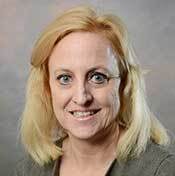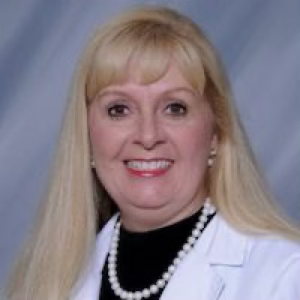NP Authority: The Practice Environment in Indiana
Find NP Schools
For the latest academic year, we have over 180 NP schools in our database and those that advertise with us are labeled “sponsor”. When you click on a sponsoring school or program, or fill out a form to request information from a sponsoring school, we may earn a commission. View our advertising disclosure for more details.
“The future for nurse practitioners in Indiana is bright and full of promise. With an increasing need for accessible, high-quality care—especially in rural and underserved areas—NPs are poised to take on critical leadership roles in primary and specialty care delivery.”
Dr. Wendy Stoelting-Gettelfinger, PhD, JD, Associate Professor, University of Indianapolis School of Nursing
The US is experiencing a primary care crunch, and Indiana is not immune. According to the Kaiser Family Foundation (KFF), Indiana has 151 Primary Care Health Professional Shortage Areas (HPSAs) that are collectively home to more than two million people. Those numbers have been growing and will continue to grow rapidly as Baby Boomers retire. Like many other states, Indiana desperately needs an influx of capable and cost-efficient primary care providers. But medical schools can’t graduate enough physicians to meet the need, and fewer physicians are going into primary care than ever before.
NPs could be a significant part of the solution to Indiana’s healthcare shortages. The increasing professionalization and maturation of NP education, training, and clinical practice has expertly equipped NPs to provide primary care, acute, and specialty health services. And most HPSAs are in rural and underserved areas, where NPs are more likely to practice than their physician counterparts.
The laws in Indiana have not kept pace with the evolution of the NP profession. While supervisory requirements may have been necessary when they were formed several decades ago, back before NPs had graduate degrees, preceptorships, and hundreds of hours of clinical experience, some now feel that they are outdated. Over half the states in the US have instituted some form of full practice authority: laws that allow NPs to practice to the full extent of their education and training
Indiana is not yet one of them, but there’s hope on the horizon.
Meet the Experts

Marne Juestel, DNP, APRN, FNP-BC
Dr. Marne Juestel is a former clinical assistant professor of nursing at the Indiana University Northwest School of Nursing in Gary, Indiana. She received her BSN from Valparaiso University, and her DNP from Rush University.
Over a 25-year nursing career, Dr. Juestel has practiced as an emergency medicine NP and as a family NP, working in both rural and non-rural settings. Prior to joining the faculty at IU Northwest, Dr. Juestel served as an assistant professor at Purdue University Northwest. She currently splits her time between academic and clinical settings.
Dr. Juestel was interviewed for this article in 2021.

Dr. Wendy Stoelting-Gettelfinger, PhD, JD, FNP, APRN, AGACNP-BC, NP-C
Dr. Wendy Stoelting-Gettelfinger is an associate professor and the graduate clinical program director for the University of Indianapolis (UIndy) School of Nursing. She also serves as the family nurse practitioner track coordinator. She graduated from Indiana University Bloomington Law School in 1993 and earned her PhD in nursing from Indiana University in 1999. She is dual certified as a family nurse practitioner with over 13 years of experience in family practice and is also certified as an adult gerontology acute care nurse practitioner. She has over nine years of experience as an acute care nurse practitioner and maintains a current practice as a hospitalist nurse practitioner at Indiana Internal Medicine Consultants.
Dr. Stoelting-Gettelfinger has worked as an attorney, assistant commissioner at the Indiana State Department of Health, and has been a nursing professor since 1995. She has taught at the University of Indianapolis since 2011. She enjoys spending time with her family and twin children. Her daughter is currently in her residency at the University of Cincinnati, and her son is completing medical school at Indiana University.
Dr. Stoelting-Gettelfinger was interviewed in 2025 for an update to this article.
The Challenges of NP Practice in Indiana
“Honestly, NPs are amazing,” Dr. Juestel says, with a laugh. “We are great at what we do. We establish a rapport with patients. We look at things holistically. Many of us work in Federally Qualified Health Centers (FQHCs) or rural health clinics. We try to have our students do clinicals in those types of sites for the underserved, and then that can flow into a job for them. But the current laws don’t allow us to practice independently.”
Over 50 years of research have shown that NPs provide high-quality primary, acute, and specialty healthcare services in a wide variety of settings. But Indiana is a restricted practice state, meaning that NPs still face barriers in practicing to the full extent of their education and training.
In Indiana, NPs are not explicitly recognized in state policy as primary care providers. In order to practice with prescriptive authority, they’re required to enter into a collaborative agreement with a supervising physician. The supervising physician must review 5 percent of an NP’s charts where medicine has been prescribed.
These restrictions, many of which were designed before improvements were made to the education and training of NPs, undercut the ability of NPs to cover the increasing health shortages in Indiana.
And the restrictions are even more of an impediment in rural and underserved areas, which is precisely where the need is greatest, and where there are the fewest physicians potentially able to supervise an NP.
“My first job was in a rural health clinic,” Dr. Juestel says. “I got an HRSA loan repayment for $50,000 of tuition at Rush University, and I learned a lot. You see all walks of life in a rural health clinic. There is a gap there in terms of available primary care.”
Restricted practice sometimes asserts itself in unpleasant ways, primarily through establishing a direct hierarchy: the supervising physician has final authority. While that might be ideal in some specialty practice settings, many of the health services rendered in primary care and family practice are not highly complex issues.
Under the current restrictions, an NP with a long history of working with a particular rural patient population may encounter conflicting opinions from a younger supervising physician who has just moved to the area; or an NP attempting to prescribe clinically safe contraceptives to a patient may meet resistance from an ideologically opposed rural physician. Dr. Juestel has encountered both situations in her NP career.
Corner cases aside, the most burdensome feature of the restricted practice environment in Indiana is that expertly trained, long-serving, highly experienced NPs cannot run their own independent practice. As more primary care physicians retire and move away from rural clinics, the NPs most able and willing to take their place are prevented from doing so.
“I’ve been working in a family practice for ten years,” Dr. Juestel says. “My collaborating physician is going to retire eventually, and then he’ll turn over this practice to someone else. But right now, because of the laws, that can’t be me. Why should another doctor, who doesn’t know the patients, come in and run the place? It doesn’t make sense. We’re both hoping something changes, and I can take over when he’s ready to leave.”
Making a Measured Transition to Independent Practice
The available research suggests that most NPs in Indiana are ready for independent practice. A 2017 RAND report found that full practice authority for Indiana’s NPs might contribute to improvements in provider supply, access, utilization, and patient experience with care. This dovetails with preliminary data from the other 34 states that have adopted more progressive legislation aimed at allowing NPs to practice to the full extent of their training and education. But uncertainty remains around how that legislation should look in Indiana.
The Indiana legislature has proposed several bills aimed at removing the collaborative agreement requirement for NPs, but they have thus far died in chamber. One of the narratives opposing the bills has revolved around the perceived inexperience of new NPs and the lack of standardization across NP programs.
But in many states, full practice authority for NPs depends on the NP obtaining several years of hands-on, semi-supervised experience post-graduation. Residencies, fellowships, and preceptorships are all rising in popularity for recent graduates of NP programs, facilitating the transition from education to practice.
“I’ve been doing this for 20 years, and I absolutely would not want NPs practicing independently straight out of school,” Dr. Juestel says. “And there is a difference between online programs and the type of program where I went to school; they’re just not the same. We need to standardize our education and make it so NPs are coming out respected and qualified. The programs need to be rigorous. Then NPs should have three years of full-time experience under a good NP or physician mentor, as in a residency program. After that, it should be open for independent practice.”
In 2020, a crisis even more insistent than the state’s looming primary care shortages forced the hand of Indiana’s decision-makers. As part of Governor Eric J. Holcomb’s Executive Order 20-05, all restrictions that impeded the delivery of NP services were waived, temporarily. Several other restricted practice states followed suit, resulting in an unprecedented opportunity for progressively-minded NPs to prove their point: when empowered to the full extent of their training, NPs can make a huge difference, especially in a full-scale crisis.
And, despite the biggest fears of the fans of restricted practice for NPs, lifting restrictions appeared to have helped. Dr. Juestel and her colleagues will be sifting through new data sets and looking for new research about this period of temporary full practice authority.
“We absolutely need more quantitative research studies, which we never have the time to do,” Dr. Juestel says. “We’re all so busy. Many of us are women raising families, balancing different tasks. I teach NP students. I work three days a week as an NP. I have five kids. So how do you find time to get involved, to go down to Indianapolis and advocate? But we have to be involved and be there. We have to.”
2025 Update: A Trend of Growth and Leadership
Today, Indiana still faces many healthcare challenges. Rural healthcare in particular remains an extremely relevant issue. And, like the rest of the nation, the state faces staffing shortages, especially in primary care. Nurse practitioners are well-equipped to address these challenges. They are expert primary care providers, and in rural areas, they are sometimes the only care provider at all.
“The NP landscape in Indiana is collaborative, supportive, and constantly evolving,” says Dr. Wendy Stoelting-Gettelfinger, Associate Professor, Graduate Clinical Program Director, and Family Nurse Practitioner Track Coordinator at UIndy. “Nurse practitioners here have broad autonomy, and while they do work in collaboration with physicians, NPs often lead patient care efforts—especially in primary care settings. Whether in a bustling city hospital or a rural health clinic, NPs in Indiana are trusted providers, and their role continues to grow in scope and recognition.”
In Indiana, there have been several legislative attempts to codify that growing trust and recognition over the last few years.
In January 2023, Indiana legislators introduced two bills, SB213 and HB1330, which would’ve removed the provision requiring APRNs to operate under a collaborative practice agreement with a physician, thereby granting the state’s APRNs full practice authority and empowering them to address the healthcare access crisis. The Coalition of Advanced Practice Registered Nurses of Indiana (CAPNI) provided a front of unified support. Unfortunately, the bills still did not pass. Representative Cindy Ledbetter reintroduced similar legislation that would’ve granted APRNs full practice authority in 2024, but it died in committee.
But hope remains, including at the federal level. In February 2025, a new version of the Improving Care and Access to Nurses (ICAN) Act was introduced in the US Senate. If passed, the legislation would increase healthcare access for patients on Medicare and Medicaid by removing federal barriers to practice for NPs and other APRNs—a significant win for NPs and their patients at the federal level, one which would have an outsized effect in states like Indiana. As of July 2025, this version of the ICAN Act remains in committee.
“There are ongoing discussions around expanding the independence of NPs, and while those conversations are still developing, the overall trend is one of growth, trust, and opportunity,” Dr. Stoelting-Gettelfinger says. “More patients are seeing NPs as their go-to providers, and more health systems are embracing the value that NPs bring.”
The value that NPs bring is increasingly quantifiable. Dr. Stoelting-Gettelfinger points to a recent meta-study that looked at 11 studies from the U.S. and abroad, comparing how NPs and physicians perform in specialty outpatient care. The results were clear: NPs provided care that was just as safe and effective as physicians in key areas like symptom control, treatment complications, and overall quality of life (JAANP 2020). Those studies show what many patients and providers already know: NPs are a powerful resource in addressing the health needs of the nation.
“The future for nurse practitioners in Indiana is bright and full of promise,” Dr. Stoelting-Gettelfinger says. “With an increasing need for accessible, high-quality care—especially in rural and underserved areas—NPs are poised to take on critical leadership roles in primary and specialty care delivery.”

Matt Zbrog
WriterMatt Zbrog is a writer and researcher from Southern California, and he believes nurse practitioners (NP) are an indispensable component of America’s current and future healthcare workforce. Since 2018, he’s written extensively about the work and advocacy of NPs, with a particular focus on the rapid growth of specialization programs, residencies, fellowships, and professional organizations. As part of an ongoing series on state practice authority, he’s worked with NP leaders, educators, and advocates from across the country to elevate policy discussions that empower NPs. His articles have featured interviews with the leadership of the American Association of Nurse Practitioners (AANP), the National Association of Pediatric Nurse Practitioners (NAPNAP), and many other professional nursing associations.